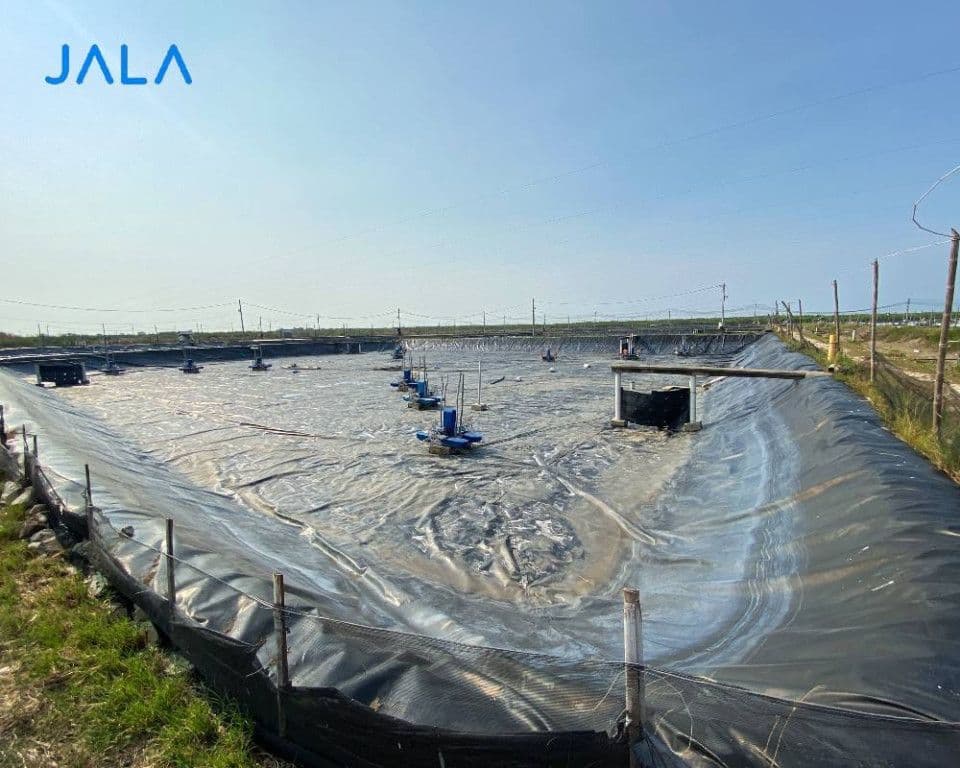
Farmers who are going to run cultivation from zero or starting a new cycle will not execute recklessly. There are several things that farmers need to do, including pond preparation. Pond preparation includes several crucial measures, one of which is drying the pond and cultivation facilities.
Drying Pond and Cultivation Facilities
Pond drying is performed in the initial preparation stage and between cycles. This is the first stage in cultivation preparation. The aim of this process is to cut the pathogen cycle that causes diseases, neutralize pond conditions, and make it easier to apply treatment.
Drying is the cheapest and most effective method to eliminate pests and diseases left in the pond. Pathogenic microorganisms and harmful chemicals will also die as it is constantly exposed to sunlight.
Pond drying is done by emptying the pond and drying it under the sun. It is done until the ground soil is dry and cracked or strong enough to hold the weight on it. This process usually takes up to 7 days, but it still depends on the weather conditions and soil characteristics.
To see whether the soil is dry enough and the pond is ready to proceed to the next step, step on the surface and check the depth of the footprints. If it does not exceed 5cm, the pond is ready to proceed to the next step.
The method above can be implemented to traditional ponds. For intensive farming, farmers usually cultivate in concrete or plastic ponds. The types of plastic that farmers usually use are HDPE, tarpaulin, or mulsa plastic. Using plastic to cover the pond aims to limit direct interaction between water and soil because this interaction may cause harmful anoxic reactions for shrimp.
Concrete ponds have similar advantages with plastic ponds. Even though it costs a lot of money, the preparation process of concrete ponds does not require much time. Concrete ponds are also strong enough to contain significant volumes of water mass, and its management is quite easier.
There are several things that need to be addressed while drying plastic or concrete ponds, namely:
- If the pond has a drainage gate, open it to drain the water
- If the pond does not have a drainage gate, drain it using a water pump
- Make sure that the dirt in the pond is also dissolved
- If there is still some dirt left, clean the parts where the dirt left to make the entire pond clean
- Once there is no water and dirt left, close the drainage gate
- Start drying the pond under the sunlight
Not only ponds, cultivation facilities used in the pond such as paddle wheels and feeding trays need to be dried as well. The whole cultivation process must be performed using sterile tools and facilities. Drying cultivation facilities aim to avoid microorganisms and harmful chemical contamination, especially if any disease is detected in the previous cycle.
Maintaining ponds and cultivation facilities
Ponds and cultivation facilities must be maintained properly and carefully to ensure sustainable cultivation and extend the life of both ponds and facilities. As a part of pond maintenance, farmers can install filter nets to prevent organisms from outside the farm from entering the farm. Organisms from outside the farm are at risk of carrying disease or even becoming shrimp predators.
Meanwhile, the maintenance of cultivation facilities can be conducted by sterilizing every facility that will be used. Sterile facilities and tools will prevent contamination to the pond. In addition to sterilization, make sure to check all facilities before use for leaks or damage.
References
10 Tips Dasar Budidaya Udang | The Fish Site
Persiapan Antar Siklus Budidaya | Kabar Udang
Suharyadi, dkk. (2019). Modul Menyiapkan Wadah dan Media Pemeliharaan. Jakarta; Pusat Pelatihan dan Penyuluhan Kelautan dan Perikanan, Badan Riset dan SDM Kelautan dan Perikanan, Kementerian Kelautan dan Perikanan.





